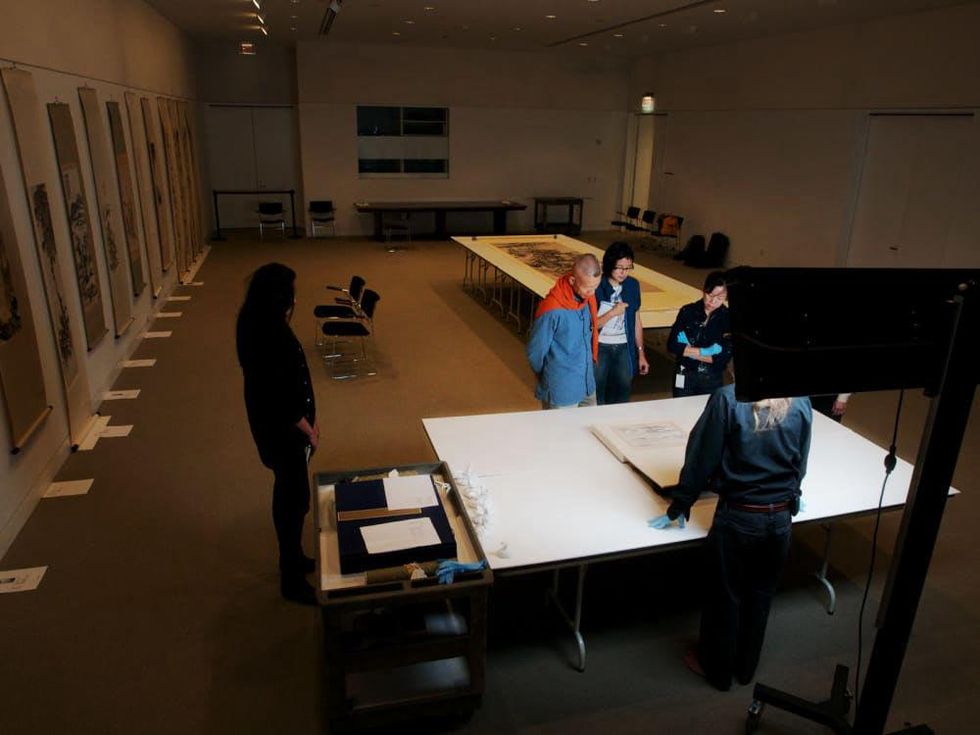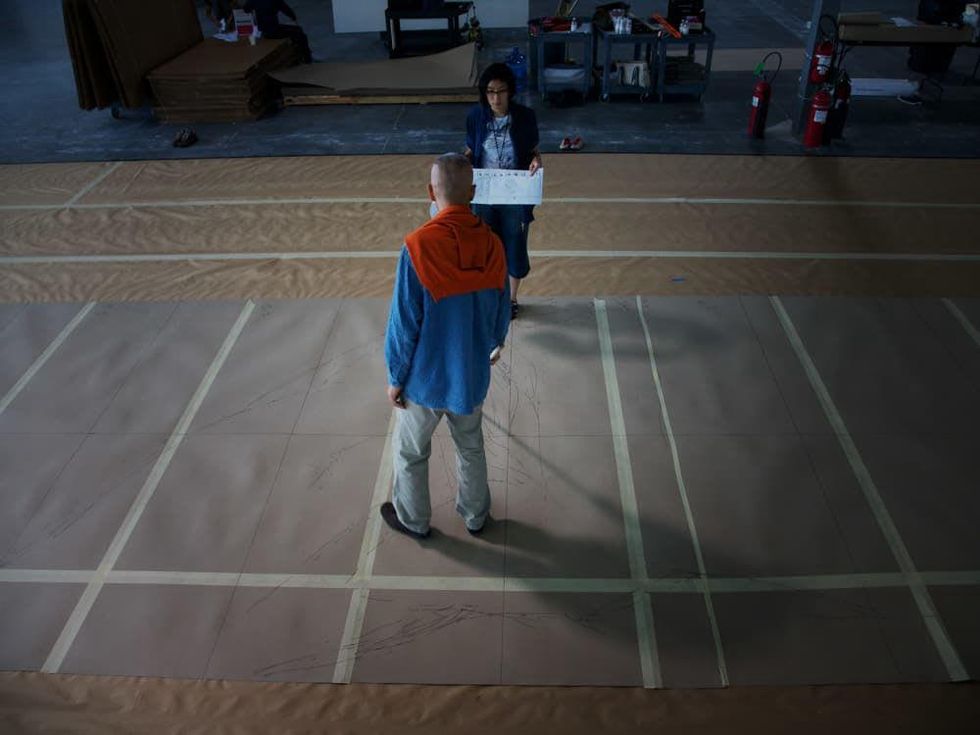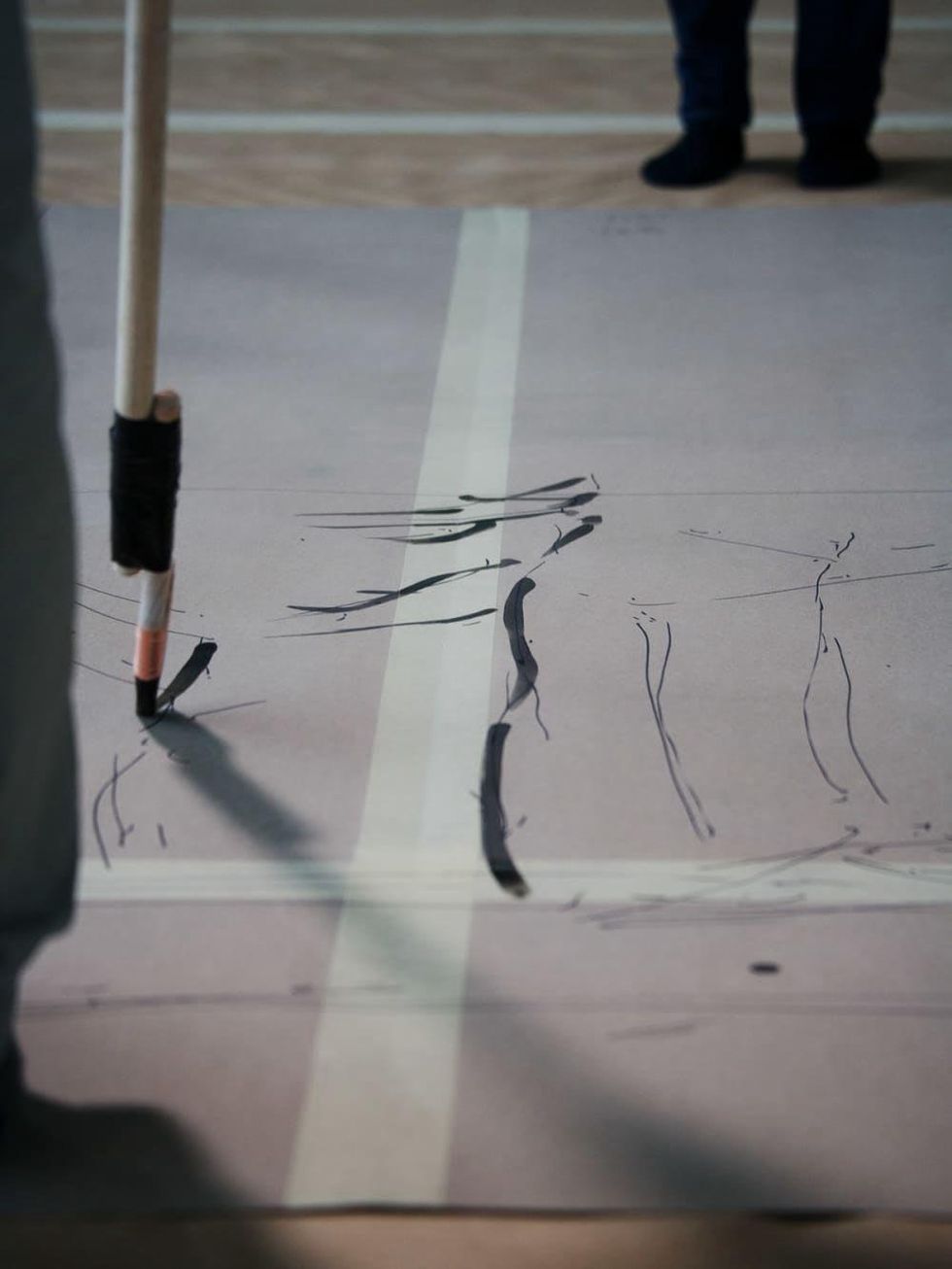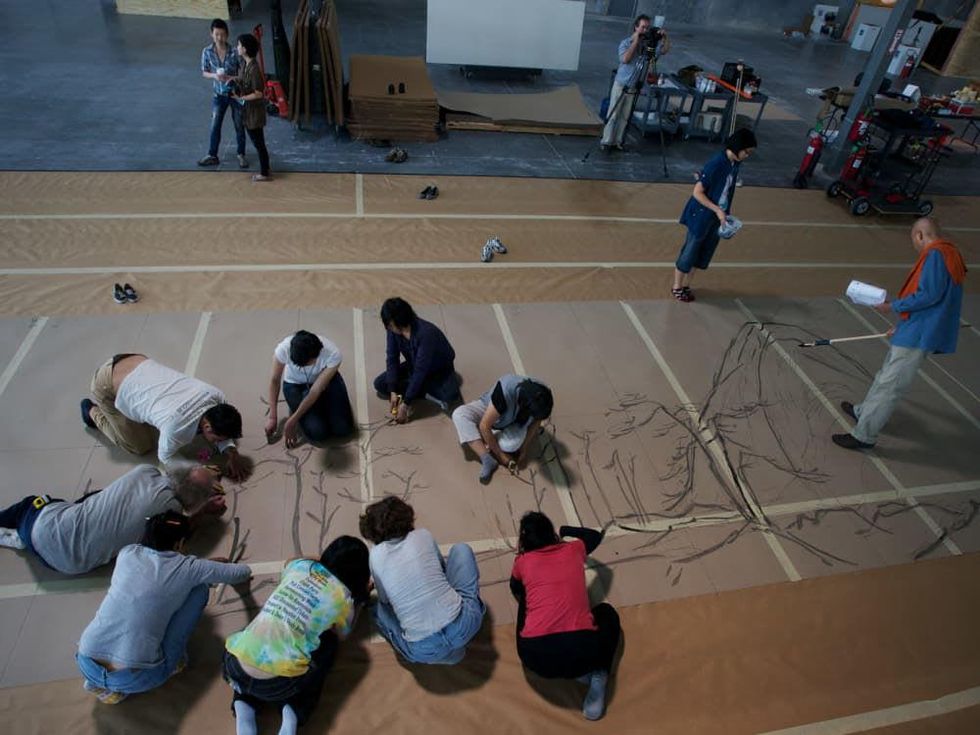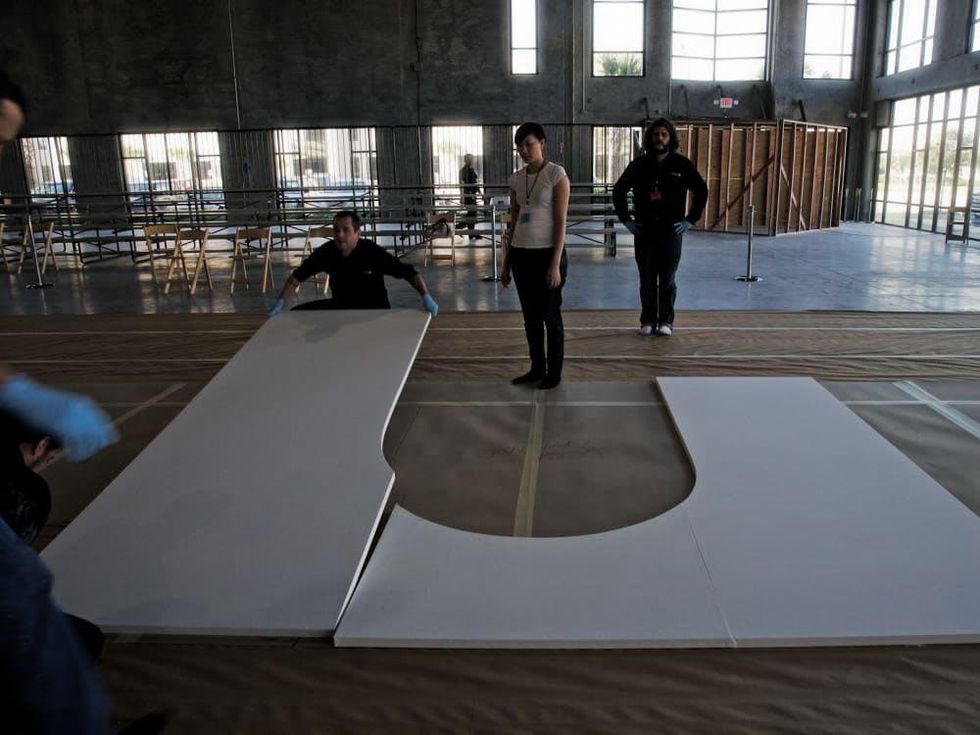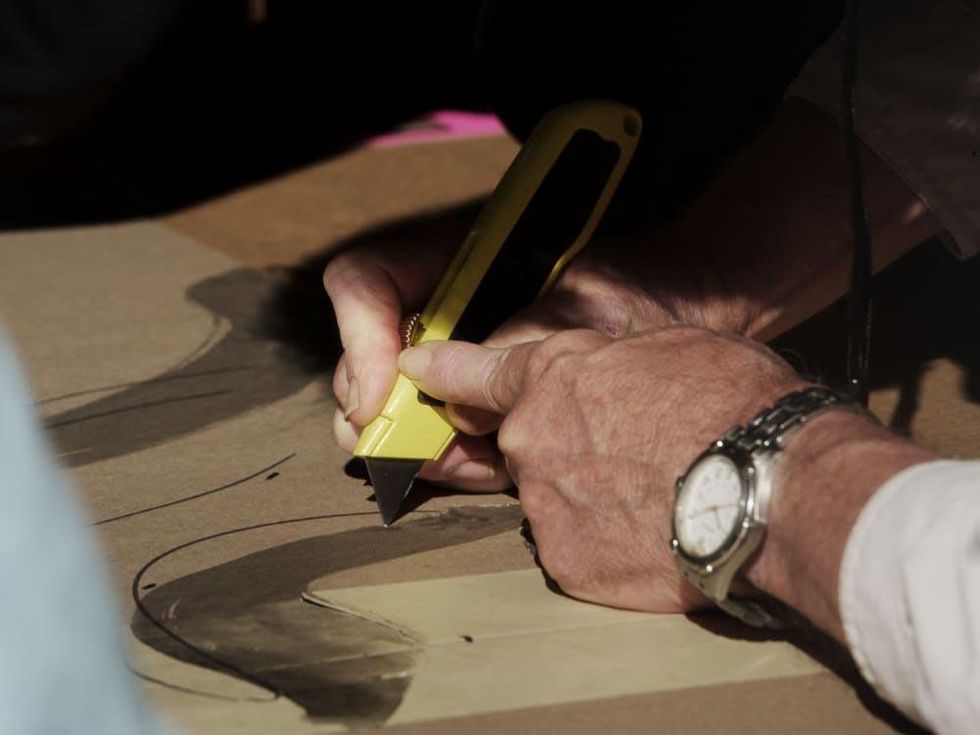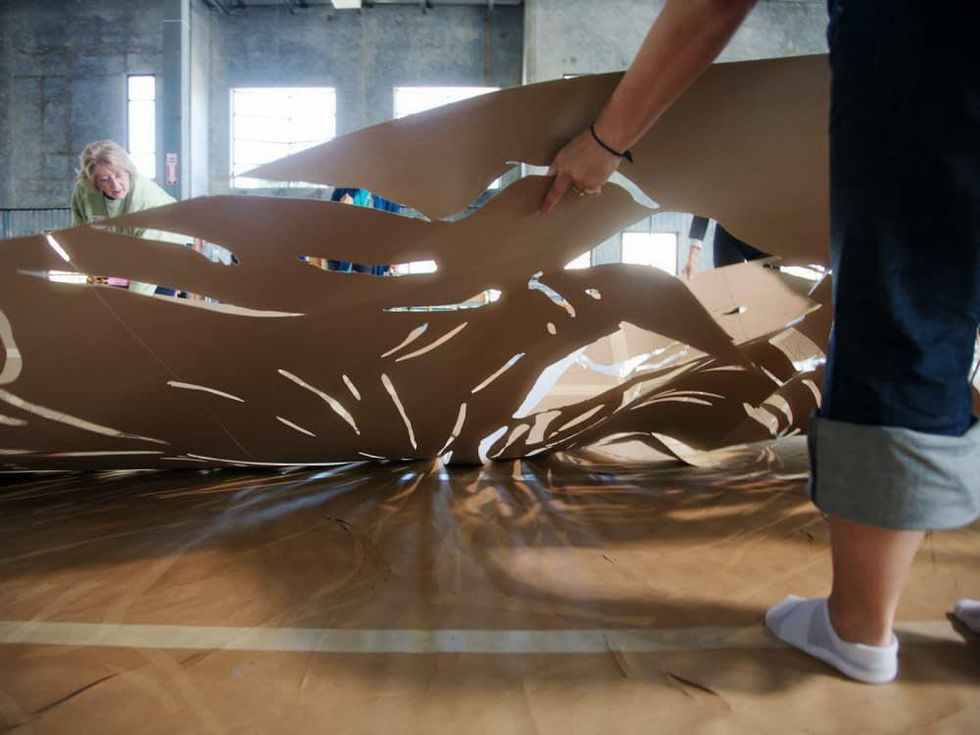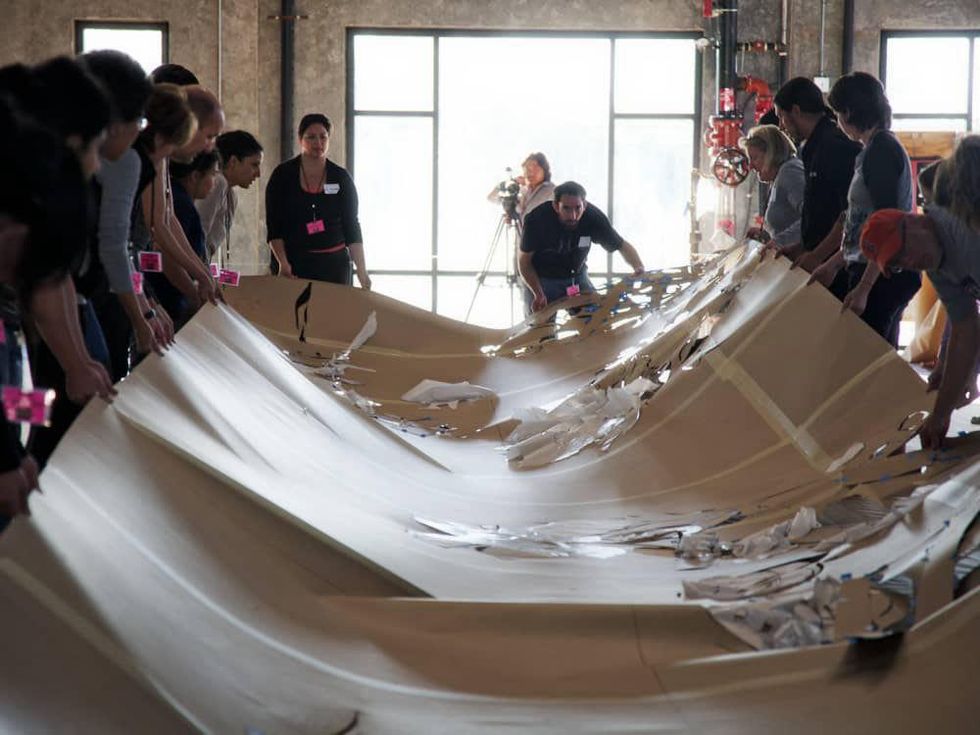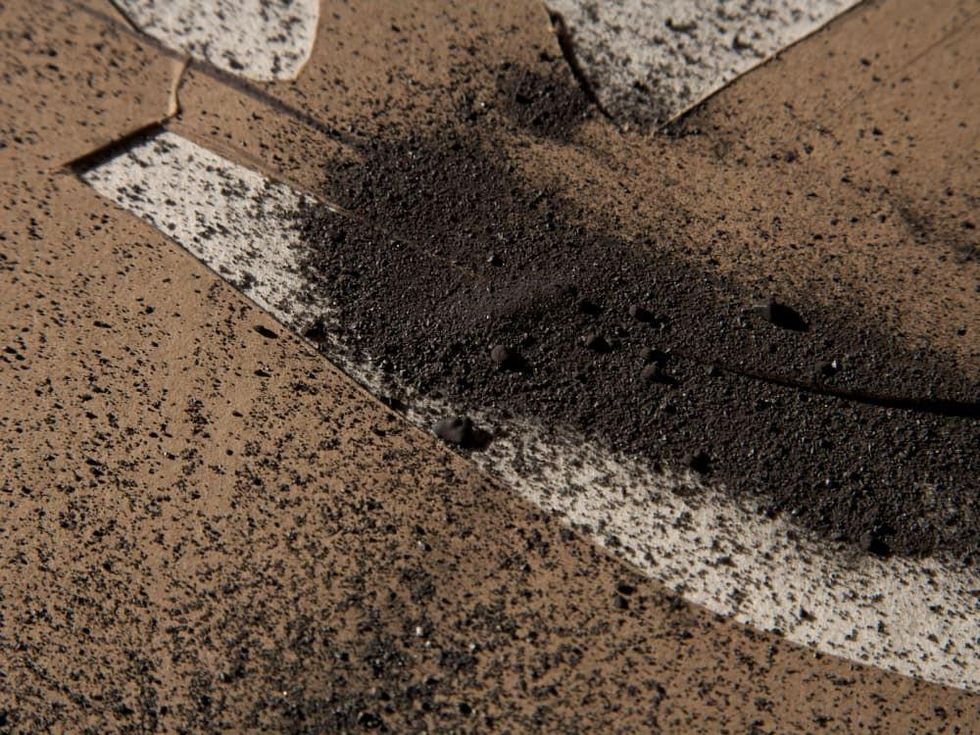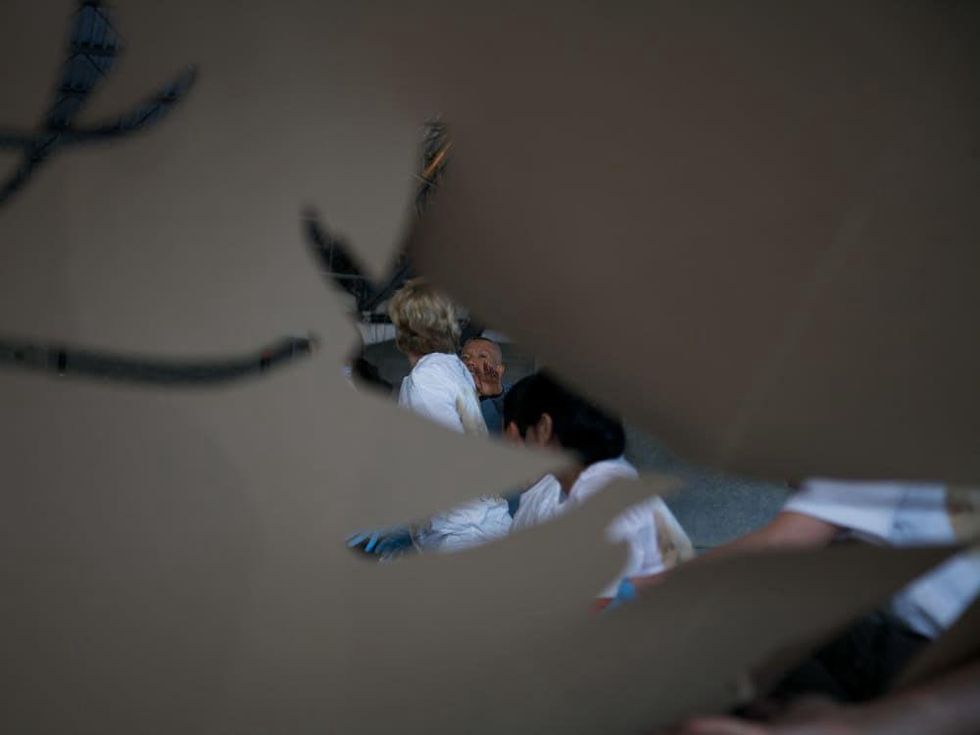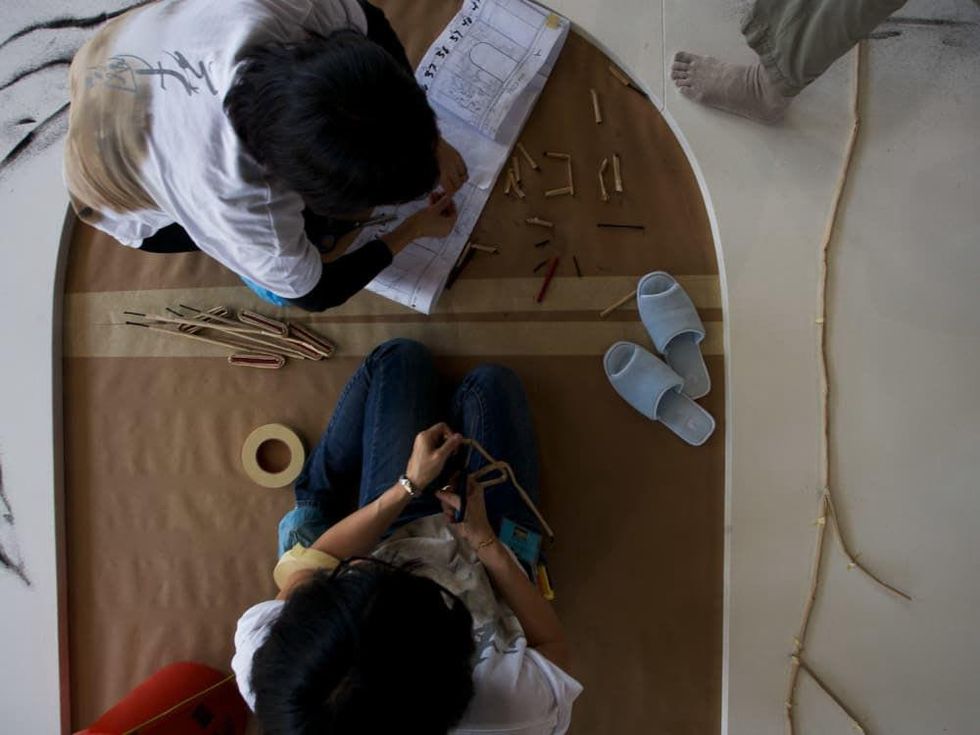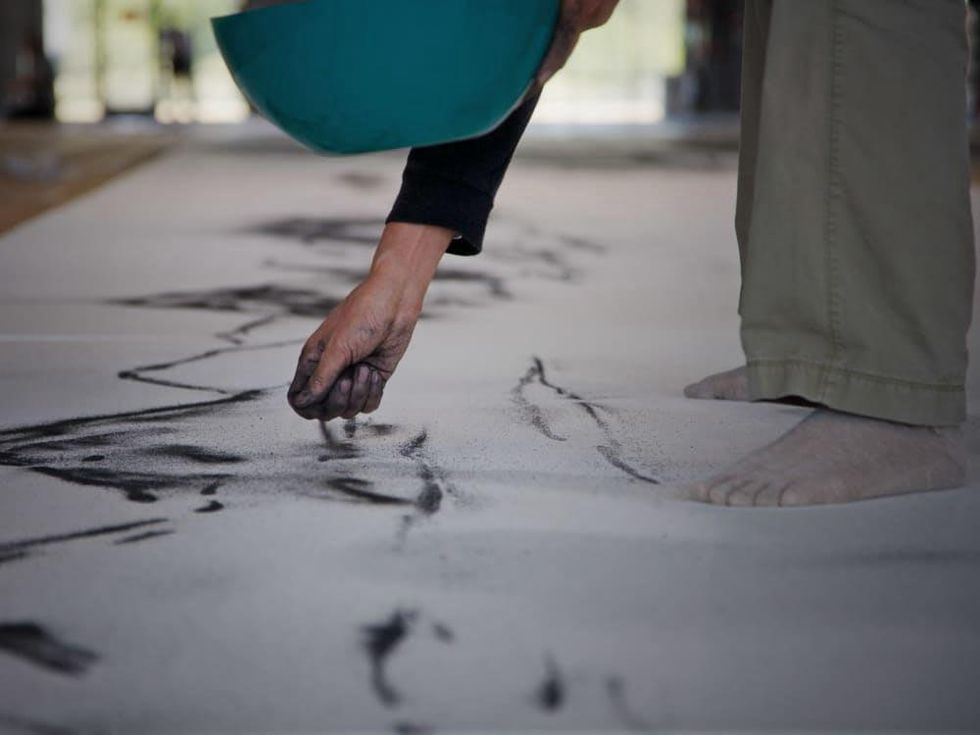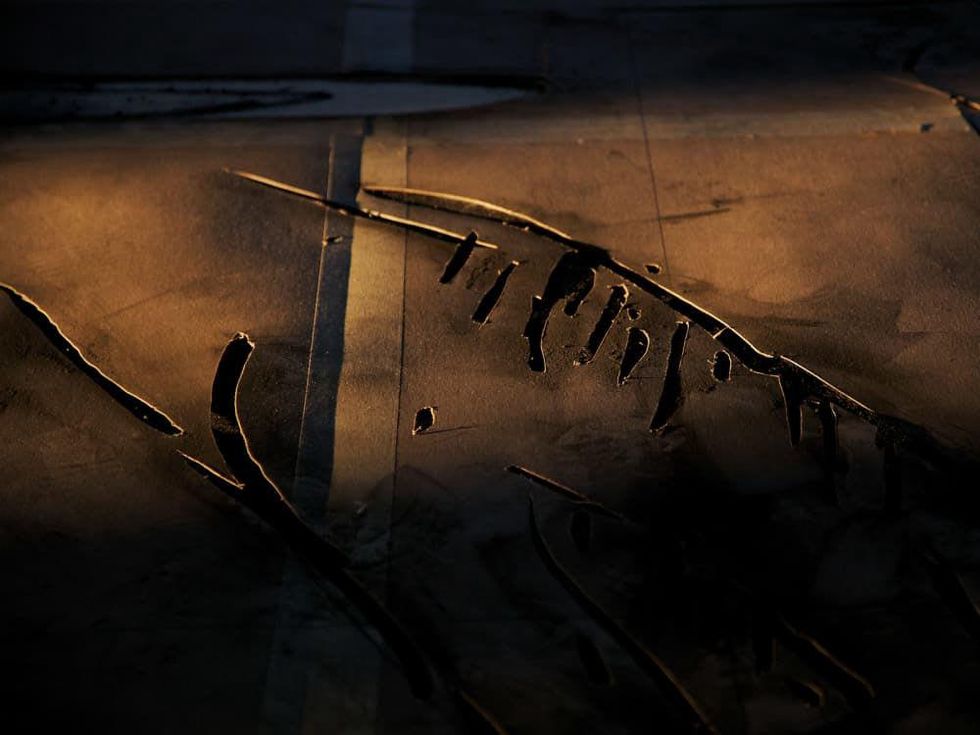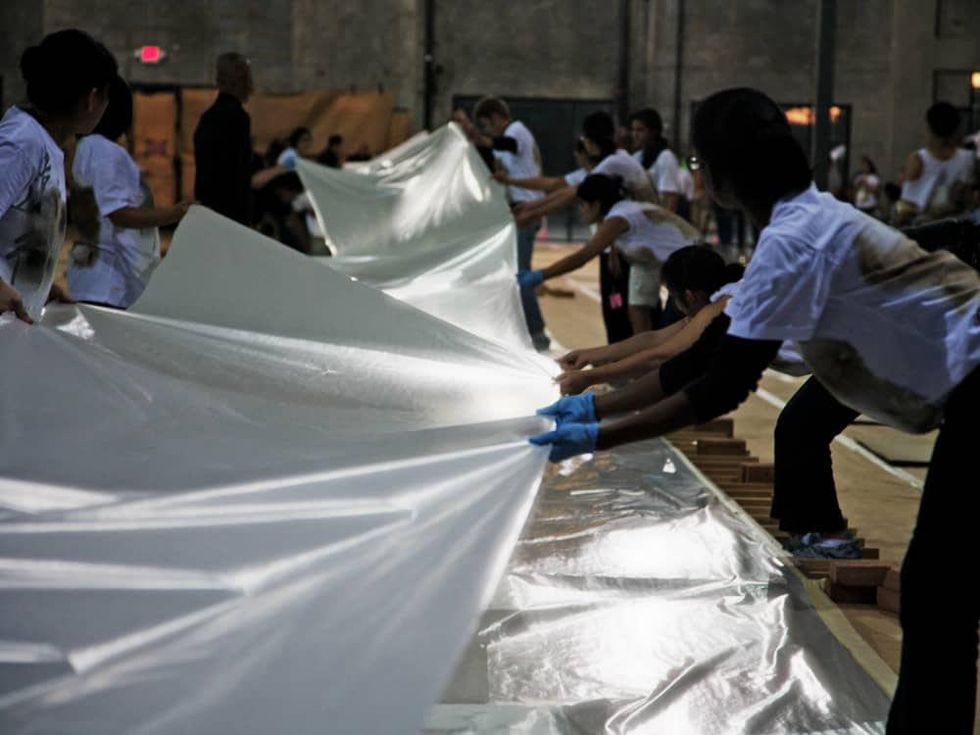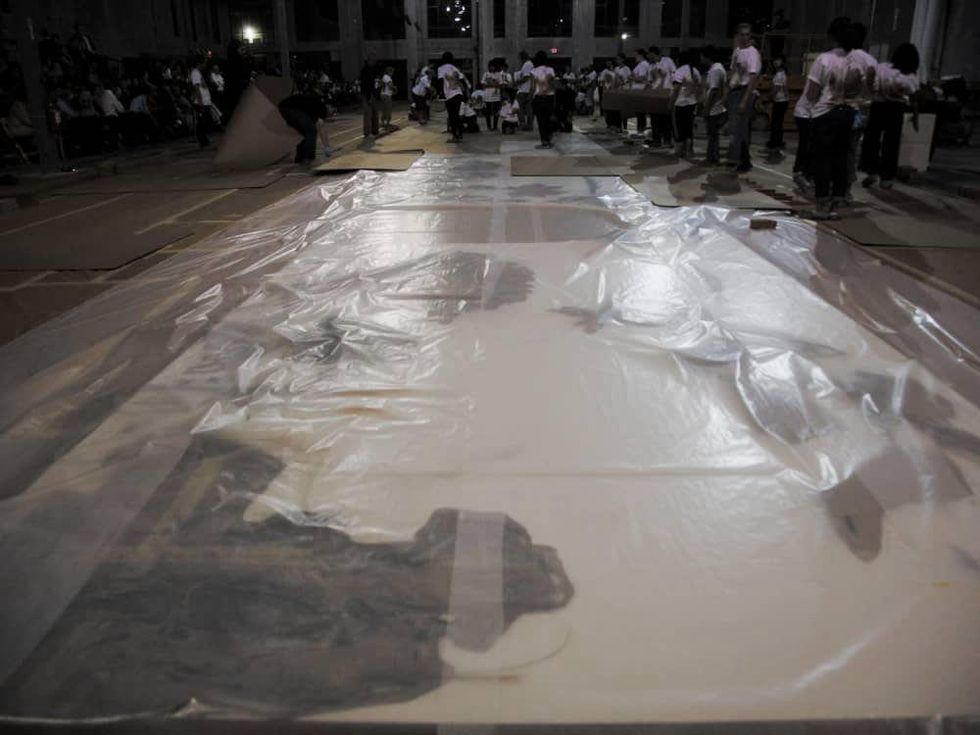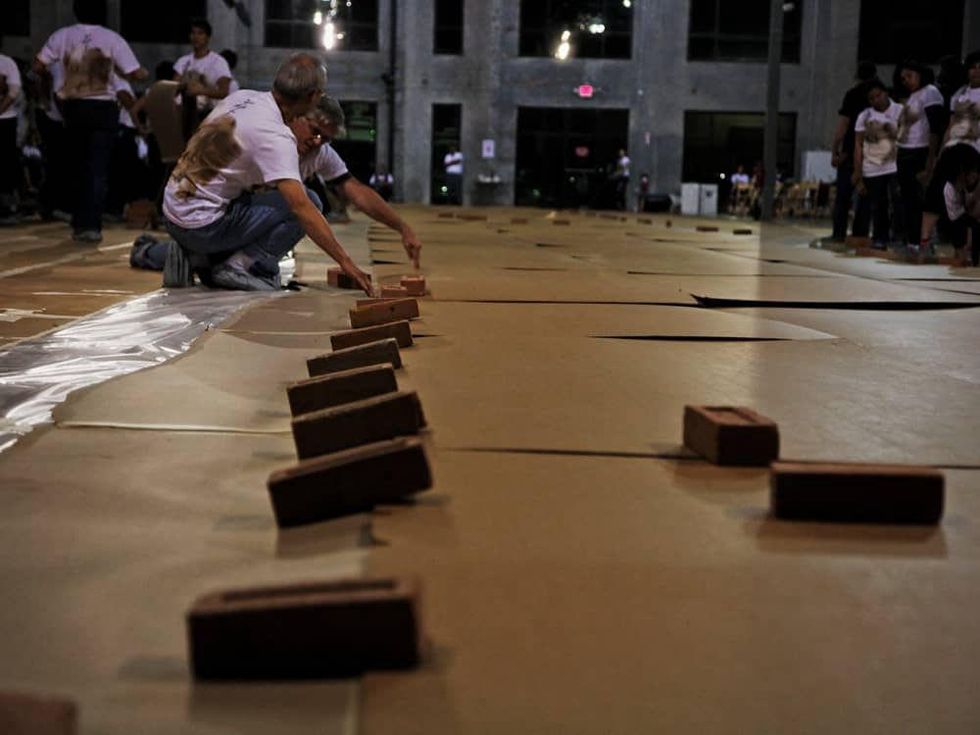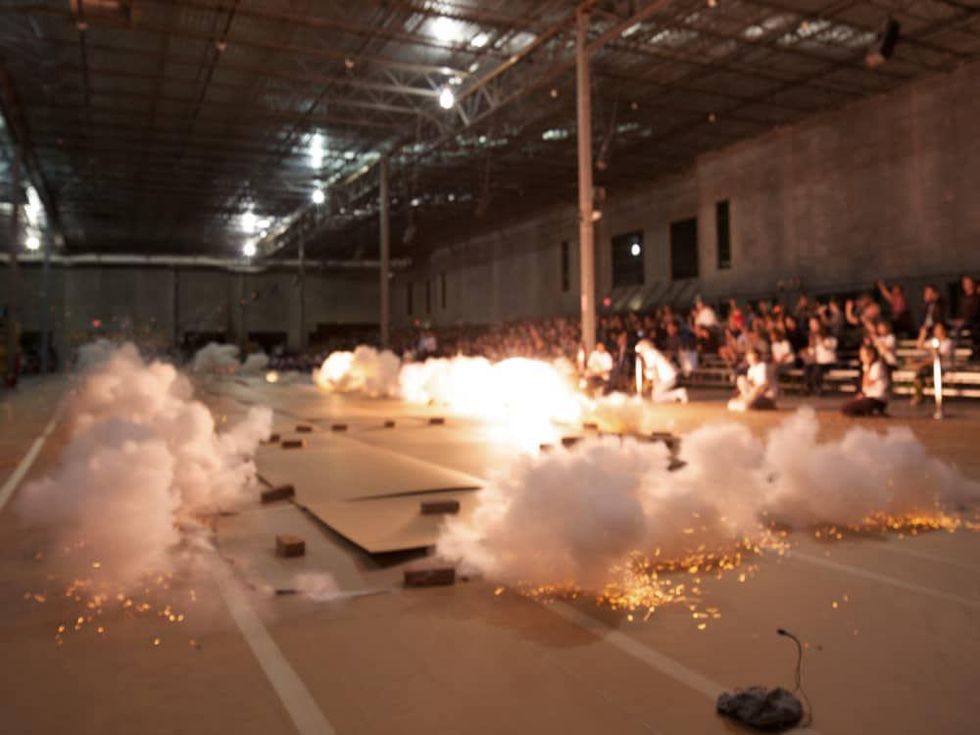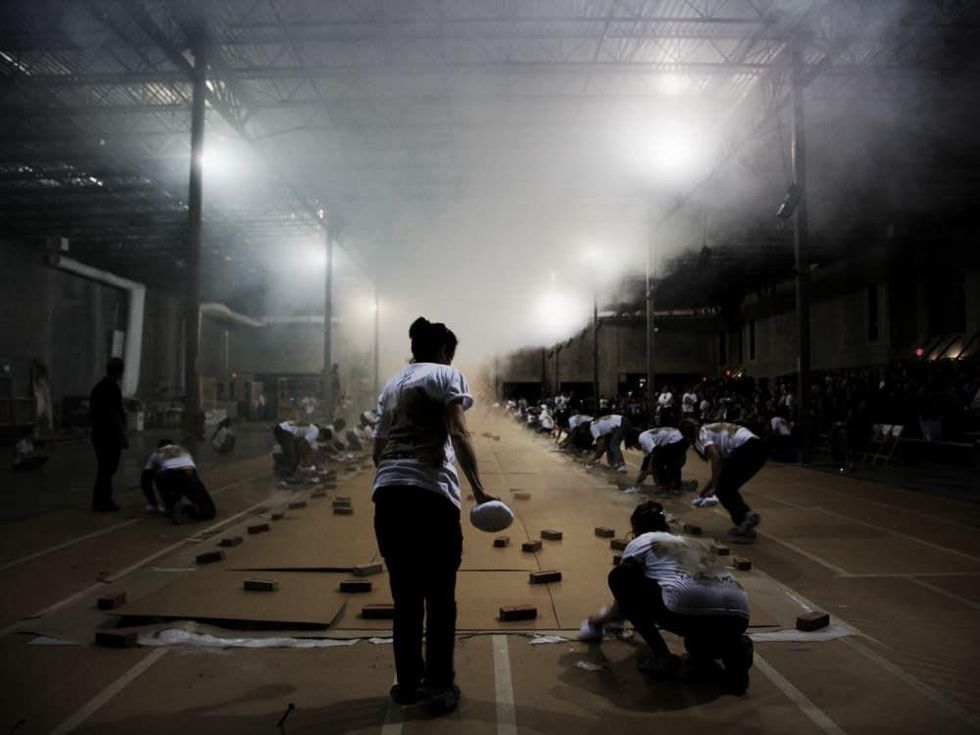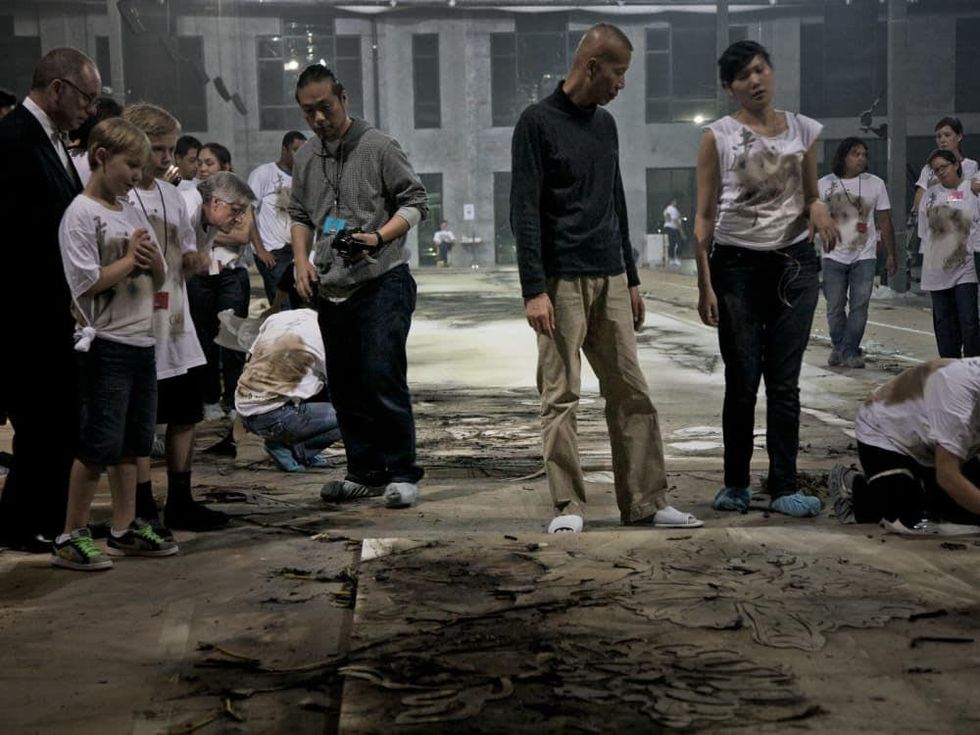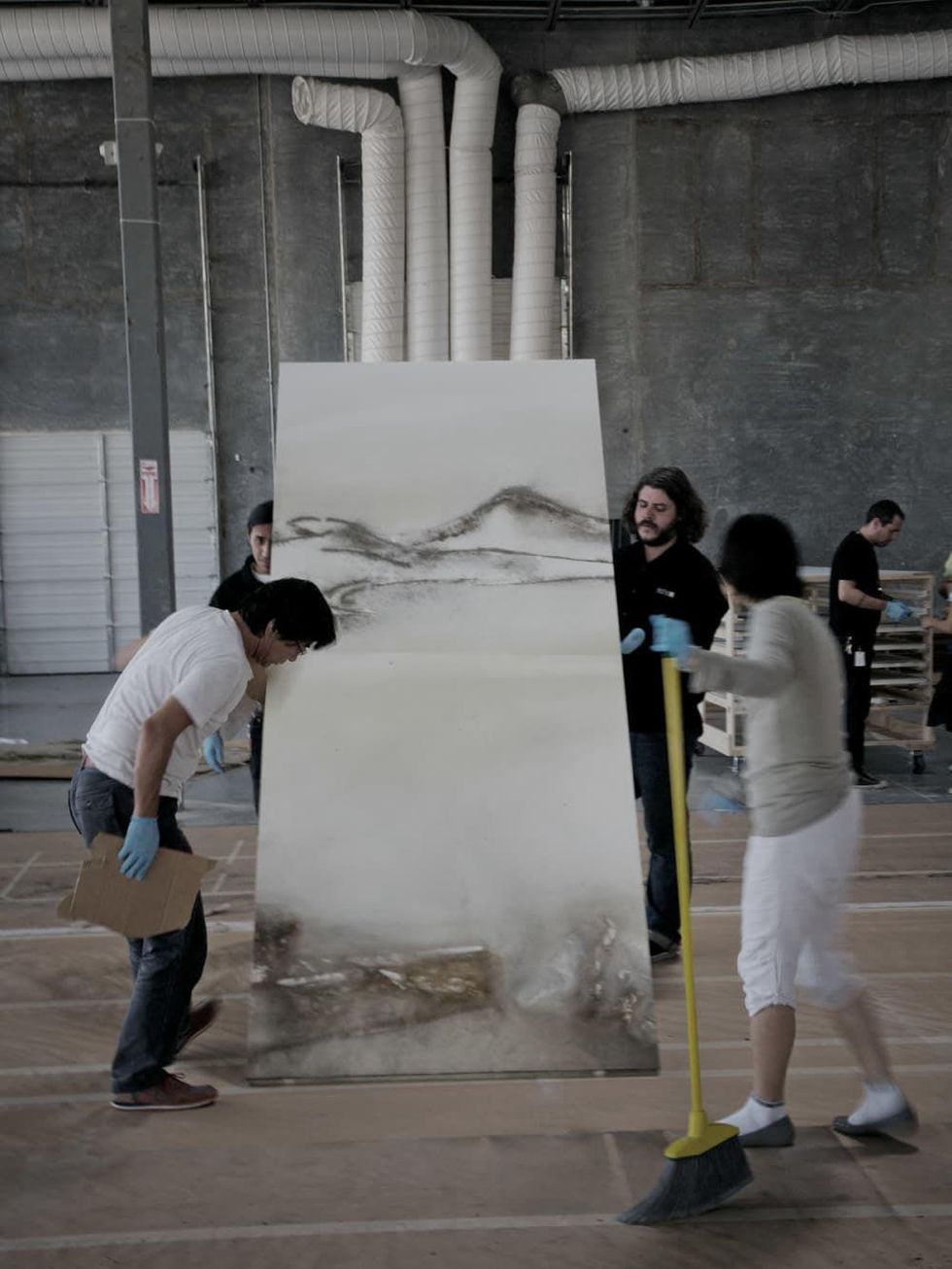Odyssey Gets Vertical
Explosive aftermath art: Cai's gunpowder mountains are mounted at MFAH
 Cai discusses his finished work with his collaborators.Photo by Douglas Newman
Cai discusses his finished work with his collaborators.Photo by Douglas Newman Cai discusses his finished work with his collaborators.Photo by Douglas Newman
Cai discusses his finished work with his collaborators.Photo by Douglas Newman Curator Christine Starkman observes the installed panels.Photo by Douglas Newman
Curator Christine Starkman observes the installed panels.Photo by Douglas Newman A crew of MFAH employees performed two test runs of the installation before"Odyssey" was created.Photo by Douglas Newman
A crew of MFAH employees performed two test runs of the installation before"Odyssey" was created.Photo by Douglas Newman The installation crew places Cai's panels in sequence.Photo by Douglas Newman
The installation crew places Cai's panels in sequence.Photo by Douglas Newman
By this afternoon, the installation of the 42 panels of Chinese gunpowder artist Cai Guo-Qiang's Odyssey in the Museum of Fine Arts, Houston's Arts of China gallery will be complete. Less than two days ago, the panels were marooned in the warehouse studio before the dramatic Wednesday night ignition that cemented the images on Odyssey forever.
As he surveyed the gallery this morning, Cai beamed before his first permanent museum installation.
The MFAH crew was aggressively installing the panels in numbered order.
"When we installed the first wall," relates MFAH curator of Asian art Christine Starkman, "I said we only need one wall; that's enough, the image was that powerful."
But the panels piled in, revealing Odyssey for the first time in its intended vertical formulation. The scent of fresh gunpowder pervades the gallery, which is already being quelled by a new air conditioning filter.
The drawing's narrative begins on the gallery's south wall with dark-shaded tropical plants, leading the eye to a series of wisps indicating misty, low mountain tops. A mix of palm trees follows the hills, whose varied layers provide glimpses of Cai's background as an oil painter. The north end of the drawing erupts with a bombast collection of mountains, crashing down to form a rugged coastline.
The depiction of such rugged terrain pays homage to monumental paintings of 13th-century China.
"Painters then were trying to capture the magnificence of the landscape," Starkman explains. "And Cai can do that too. It's here on the wall."
The east wall completes the sequence with depictions of peonies and other iconic Asiatic botanicals. As the panels were being installed, Cai marveled at the naturalism that envelopes the entire gallery. The artist spoke of the link between nature and knowledge, and that once the final panel is posted, a visitor can simply sit on the ground and receive such knowledge.
Standing in the gallery, the viewer is struck by the directness of particular features, but a closer examination reveals the various gunpowder effects, and a particular lightness emerges. Most subtle of all is the landscape's reflection on the polished black granite floor, which Starkman compares to a pool of water. The moment that Cai suggested mounting his drawings on the wall, it was at the suggestion of MFAH director Peter Marzio that a reflective stone be a part of the installation.
Feng shui plays a leading role in the layout of the drawings. For example, the placement of the monumental mountain image at the gallery's north end and a waterscape towards the south is in accordance with positive chi, explains the curator.
"The movement of the chi," Starkman elaborates, "combined with the spirit of all of the people who put their energy into this work — it is emitting all over the room."

